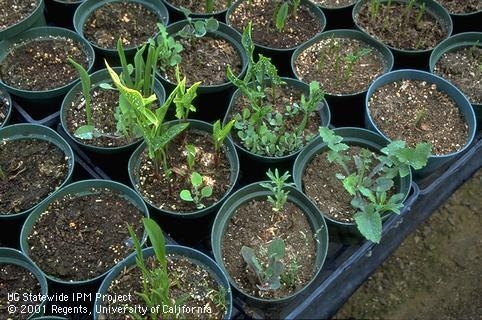Propagation
By Leonard Cicerello UCCE Master Gardener
I would like to learn to propagate my own plants, any suggestions? Carol M. Arroyo Grande
Propagation, the art of multiplying plants, is one of the most rewarding challenges that a home gardener can undertake. Propagation techniques take many forms, but all involve using plant parts to create a new plant.
First, there is seed propagation which requires the correct light, heat, and humidity to be successful. Methods of asexual propagation include cuttings, layering, budding, and grafting. Cuttings are defined by softwood, semi hardwood, and hardwood. Each plant species has a particular time that's best for successfully rooted cuttings. Asexual propagation uses the leaves, stems or roots of a parent plant to create a new plant.
Layering can happen naturally when a lower branch of a shrub grows along the ground, maintaining contact with the soil while the tip of the branch is pointed upward out of the soil. The section in or along the soil will root. You can snip off the branch that has formed roots and plant it in a pot. The same feat can be accomplished intentionally above ground with the method referred to as air layering. Make a surface cut on a branch, enclose the wound with moistened moss, and then wrap plastic around it. In time, it will form roots.
Propagation by grafting enables you to combine different varieties of citrus or stone fruits on a single tree creating what's often called a fruit cocktail tree. Tomatoes plants also lend themselves well to grafting.
Another method is propagation by division. The group of plants referred to as bulbs, which includes bulbs, corms, rhizomes, tubers and tuberous plants, are propagated by division. For maximum productivity, dig them up annually, divide them and replant them. You may have multiple cymbidium plants in a single container. To maximize its growth and beauty, remove the entire clump from the container, divide the plants, and replant each in a separate container.
For additional information on seed propagation, tomato grafting, and cuttings, register to attend the Master Gardeners Advice to Grow By workshop set for March 18th, from 10:00 am to 12:00 pm at the Garden of the Seven Sisters in San Luis Obispo. Head to our website to register - http://ucanr.edu/sites/mgslo/.
